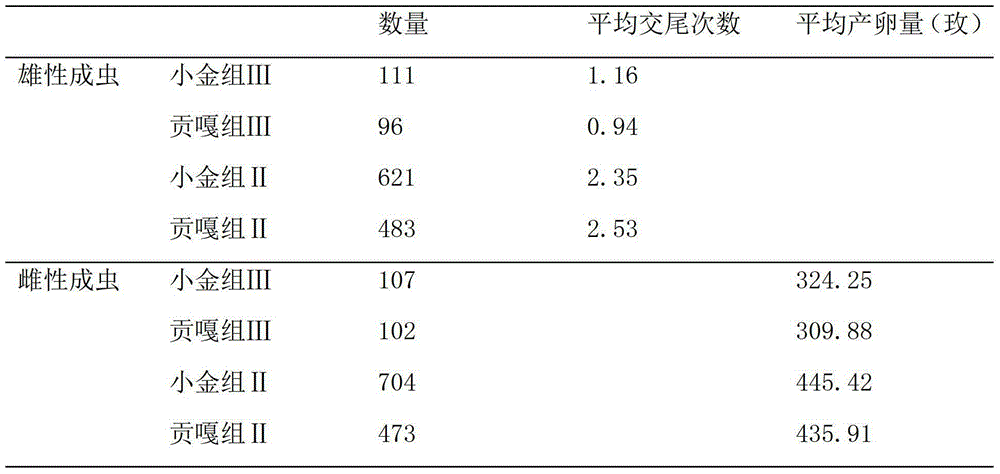A kind of species rejuvenation culture method for artificially propagating Cordyceps host insects
A Cordyceps host and cultivation method technology, applied in botany equipment and methods, horticulture, applications, etc., can solve the problems of weakened mating ability, reduced egg production, and individual reduction, so as to solve the degradation of species and solve the problem of wild resources The effect of exhaustion
- Summary
- Abstract
- Description
- Claims
- Application Information
AI Technical Summary
Problems solved by technology
Method used
Image
Examples
Embodiment 1
[0011] Embodiment 1 The investigation of the rejuvenation condition of the artificial breeding Cordyceps host insect species 1
[0012] 1. Selection of the original environment for Cordyceps cultivation
[0013] In the Cordyceps sinensis production area or a place with similar vegetation, temperature and humidity conditions to the Cordyceps sinensis production area, two plots were selected as the experimental plot of the control group and the experimental plot of the experimental group respectively. Surrounded by barbed wire. The slope of the rejuvenation base is preferably between 10-30 degrees, with good drainage; other shrubs except lawn plants are grown inside to avoid high-intensity sunlight and the harm of birds to adults.
[0014] 2. Transition management of caste rejuvenation
[0015] The 3rd generation of artificially bred little golden bat moths were collected respectively, 2 groups of 2000 larvae were reared artificially for 1-2 months, and 2 groups of larvae of t...
Embodiment 2
[0028] Example 2 The investigation of the species rejuvenation condition of Cordyceps host insects 2
[0029] 1000 larvae of the third generation Gongga bat moth and Xiaojin bat moth were respectively named Xiaojin group III and Gongga group III. Chrysanthemum ginger, carrots, human fruits, and a small amount of rhizomes of other plateau plants are raised in plateau humus (artificial substrates can also be used instead). The humus soil can form a ball by holding it firmly with the hand, and the humidity standard that it will not disperse when the hand is released. The raising temperature condition is 8-18 ℃. The stocking density is the amount of no more than 30 larvae placed in a unit feeding box (30cm long x 20cm wide x 15cm high). Because the mobility of the newly hatched larvae is weak, the range of activities is small, and the damage between individuals can be ignored, so the newly hatched larvae are suitable for intensive rearing. Intensive feeding of newly hatched lar...
PUM
 Login to View More
Login to View More Abstract
Description
Claims
Application Information
 Login to View More
Login to View More - R&D
- Intellectual Property
- Life Sciences
- Materials
- Tech Scout
- Unparalleled Data Quality
- Higher Quality Content
- 60% Fewer Hallucinations
Browse by: Latest US Patents, China's latest patents, Technical Efficacy Thesaurus, Application Domain, Technology Topic, Popular Technical Reports.
© 2025 PatSnap. All rights reserved.Legal|Privacy policy|Modern Slavery Act Transparency Statement|Sitemap|About US| Contact US: help@patsnap.com



